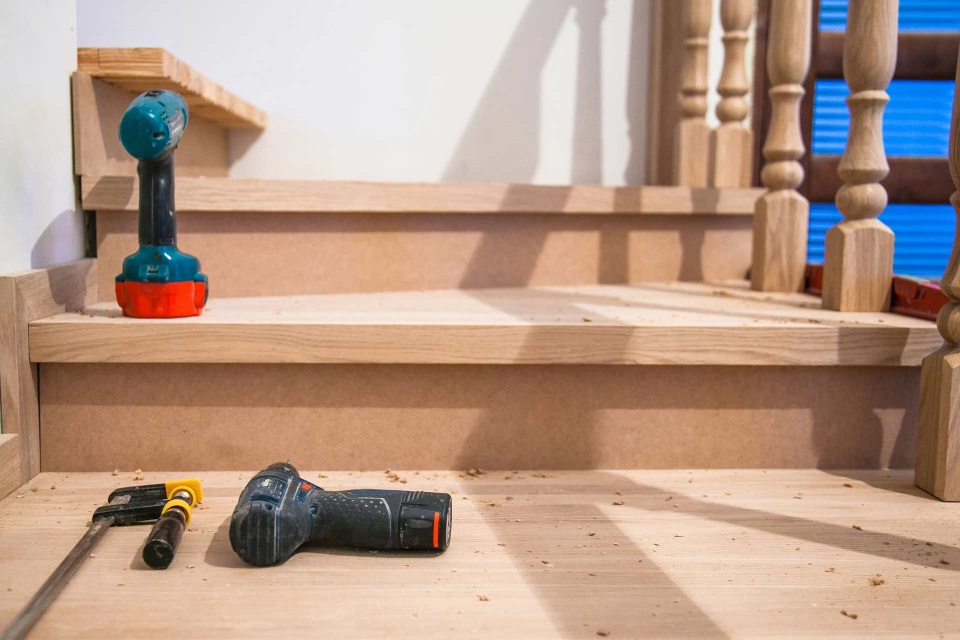
The Expert Guide to Cary Restoration: Restoring Your Home to its Former Glory
Key Takeaways:
- Restoring historic homes helps preserve cultural heritage and enhances property value.
- Cary, NC has a rich history with diverse architectural styles.
- Preserving historic homes has practical benefits and boosts the local economy.
- Restoration focuses on preserving original features while meeting modern needs.
- A thorough inspection is crucial before starting a restoration project.
- Identifying structural issues and damage is important for addressing them during restoration.
- Setting clear restoration goals, establishing a realistic budget, and working with reliable contractors are essential.
- The restoration process involves obtaining permits, making design and material choices, and coordinating the timeline.
- Understanding the Importance of Cary Restoration
Restoring historic homes can be a labor of love, but it is also an essential task that helps preserve our cultural heritage and maintain the unique character of a community. Cary, with its rich history and architectural diversity, holds a special place for restoration enthusiasts. By undertaking a Cary restoration project, you not only contribute to the preservation of the city’s historical significance but also enhance the value of your own property.
The Historical Significance of Cary
Cary, located in North Carolina, has a long and storied past. It was established in the mid-19th century and quickly grew into a bustling railroad town. The city played a significant role in the development of the region and witnessed key moments in American history, including the Civil War and the Reconstruction Era.
Many of the homes and buildings in Cary reflect this rich history. They showcase a variety of architectural styles, ranging from elegant Victorian houses to charming Craftsman bungalows. These structures serve as tangible connections to the past and are a testament to the craftsmanship and design of bygone eras.
The Value of Preserving Historic Homes
Preserving historic homes is not just about nostalgia; it also has practical benefits. Historic homes often possess unique features and materials that are no longer available, giving them an unparalleled charm and character. They are also built to last, with sturdy foundations and high-quality construction that can stand the test of time.
Furthermore, historic homes contribute to the sense of place and identity of a community. They create a distinctive atmosphere that attracts both residents and visitors, boosting the local economy. Moreover, preserving historic homes can help maintain property values and attract homeowners who appreciate the timeless beauty and craftsmanship associated with these properties.
The Role of Restoration in Maintaining Heritage
Restoration plays a vital role in maintaining the heritage of Cary. It involves bringing a historic home back to its original condition or a period-appropriate state. This process requires meticulous research, attention to detail, and skilled craftsmanship.
Restoration focuses on preserving and repairing the original features of a home, such as architectural details, materials, and finishes. It aims to retain the historical integrity of the property while ensuring it meets the needs of modern living. This delicate balance between preservation and functionality is crucial to successfully restoring a historic home.
- Assessing the Condition of Your Home
Before embarking on a restoration journey, it is essential to assess the condition of your home thoroughly. A comprehensive inspection will help you identify any structural issues or damages that need to be addressed during the restoration process.
The Importance of a Thorough Inspection
A thorough inspection is the foundation of any successful restoration project. It allows you to identify hidden problems and plan accordingly. Hiring a professional inspector who specializes in historic properties is highly recommended, as they have the necessary expertise to identify potential issues that may not be apparent to the untrained eye.
The inspector will evaluate the overall structural integrity of the home, including the foundation, walls, roof, and support systems. They will also analyze the condition of the electrical and plumbing systems, as well as assess any potential environmental hazards, such as lead paint or asbestos.
Identifying Structural Issues and Damage
During the inspection, the inspector will identify any structural issues or damages that require attention. This could include foundation problems, rotting wood, termite infestations, or water damage. It is crucial to address these issues during the restoration process to ensure the stability and longevity of your home.
Additionally, the inspector will evaluate the condition of the historic features and materials within the property. This assessment will help determine the extent of restoration work needed to bring the home back to its former glory.
Understanding the Scope of the Restoration Project
Based on the findings of the inspection, you will gain a better understanding of the scope of the restoration project. This includes identifying which areas of the home require immediate attention and prioritizing the restoration tasks accordingly.
It is important to keep in mind that restoration projects can be complex and time-consuming. Having a clear understanding of the project’s scope will help you set realistic expectations and plan accordingly.
- Planning and Budgeting for a Successful Restoration
Planning and budgeting are crucial aspects of a successful restoration project. By setting clear goals, establishing a realistic budget, and working with reliable contractors and suppliers, you can ensure a smooth and efficient restoration process.
Setting Restoration Goals and Priorities
Before starting the restoration project, it is important to define your goals and priorities. Ask yourself what aspects of the home are most important to you and what level of authenticity you want to achieve. Do you want to restore the home to its original design, or are you open to incorporating modern amenities while preserving its historic charm?
By setting clear goals and priorities, you can guide the restoration process and make informed decisions about design choices, materials, and finishes.
Establishing a Realistic Budget
Restoration projects can vary widely in cost, depending on the size and condition of the home, as well as the level of detail and craftsmanship required. It is crucial to establish a realistic budget early on and allocate funds for unexpected expenses that may arise during the restoration process.
Consulting with professionals, such as contractors and restoration specialists, can help you estimate the costs involved and make informed budgetary decisions. It is also advisable to set aside a contingency fund to account for any unforeseen challenges that may arise during the restoration project.
Working with Reliable Contractors and Suppliers
The success of a restoration project heavily relies on the expertise and skills of the contractors and suppliers involved. It is essential to work with a professional Cary restoration company with experience restoring historic homes and a deep understanding of the unique challenges associated with these projects.
When selecting contractors and suppliers, consider their track record, reputation, and portfolio of past restoration work. Request references and ask for detailed proposals that outline the scope of work, materials to be used, and a timeline for completion.
Collaborating with reliable professionals ensures that the restoration process stays on track and that the integrity of your historic home is preserved.
- Executing the Restoration Process
With careful planning and preparation, you are now ready to execute the restoration process. This phase involves obtaining necessary permits and approvals, making design and material choices, and coordinating the restoration timeline and schedule.
Obtaining the Necessary Permits and Approvals
Restoring a historic home often requires obtaining permits and approvals from local historic preservation boards or planning departments. These permits ensure that the restoration work aligns with preservation guidelines and regulations.
It is essential to familiarize yourself with the permit requirements and engage with the appropriate authorities early in the planning process. Working closely with these organizations can help you navigate the permitting process smoothly and avoid any unnecessary delays or complications.
Making Design and Material Choices
One of the most exciting aspects of a restoration project is making design and material choices that honor the home’s history and architectural style. Researching the original design elements, studying architectural patterns of the era, and consulting with professionals can help you make informed decisions.
It is important to select materials that are historically accurate or closely resemble the original ones. High-quality craftsmanship and attention to detail are crucial in achieving an authentic restoration.
Coordinating the Restoration Timeline and Schedule
Coordinating the restoration timeline and schedule is essential to ensure a smooth and efficient restoration process. This involves creating a detailed project plan, setting milestones, and clearly communicating with all parties involved.
It is important to account for potential delays or unforeseen circumstances that may arise during the restoration process. Flexibility and open communication are key to overcoming challenges and staying on track.
By executing the restoration process with precision and care, you can bring your historic home back to its former glory and contribute to the preservation of Cary’s unique heritage.
FAQ
Question: What is a Cary restoration? – A Cary restoration is the process of bringing a historic home in Cary, NC back to its original condition or a period-appropriate state while meeting modern needs.
Question: Why is Cary restoration important? – Cary restoration is important because it helps preserve the cultural heritage and unique character of the community, enhances property value, and contributes to the local economy.
Question: How do I assess the condition of my home for restoration? – To assess the condition of your home for restoration, it is essential to hire a professional inspector specializing in historic properties. They will evaluate the overall structural integrity of the home, identify any hidden issues, and assess the condition of the historic features and materials.
Question: How do I plan and budget for a restoration project? – To plan and budget for a restoration project, it is important to set clear restoration goals and priorities, establish a realistic budget considering the size and condition of the home, and work with reliable contractors and suppliers who have experience in restoring historic homes.
Question: What permits and approvals are needed for a restoration project? – Restoring a historic home often requires obtaining permits and approvals from local historic preservation boards or planning departments. These permits ensure that the restoration work aligns with preservation guidelines and regulations.
Question: How do I make design and material choices for a restoration project? – To make design and material choices for a restoration project, it is important to research the original design elements, study architectural patterns of the era, and consult with professionals. Select materials that are historically accurate or closely resemble the original ones.
Question: How do I coordinate the restoration timeline and schedule? – Coordinating the restoration timeline and schedule involves creating a detailed project plan, setting milestones, and clearly communicating with all parties involved. It is important to account for potential delays or unforeseen circumstances and maintain flexible and open communication throughout the process.
Question: How long does a restoration project typically take? – The duration of a restoration project can vary depending on the size and condition of the home, the extent of restoration work needed, and any unforeseen challenges that may arise. It is best to consult with professionals to get a more accurate estimate for your specific project.
Useful Resources:
- Preservation Directory
- National Park Service
- National Trust for Historic Preservation
- Historic Homes
- Old House Journal
- Preservation Nation
- Restore Media
- The Balance: Renovation

